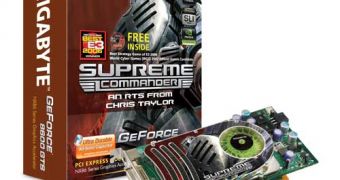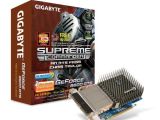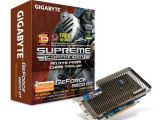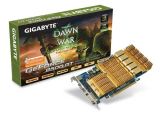This is the era of the unified shader, of the MAD+MUL operations, the FP galore, NVIDIA ruled the Earth like the great dinosaurs. They had the upper hand by bringing to the desktop segment video cards based on the unified shader architecture, which was a domain that ATI had first entered through their Xenos chip. But ATI was slow in bringing a viable alternative to the desktop segment, and NVIDIA beat them to it, twice.
First, NVIDIA released the GeForce 8800GTX, the most powerful video card for desktop available out there, with two derivatives that followed soon, the 8800GTS 640MB and the 8800GTS 320MB. These cards addressed the high-end market, and only enthusiast could desire, or afford, them. But now, as the moment when ATI will release the R600 series of video cars approaches, NVIDIA lays down a second blow with that reaches to take out everything regarding the mainstream market. Even though the 8800GTS 320MB is also considered a viable solution for the mainstream segment, the card is priced from $299-$329, which is a little bit too much for some.
That is why the NVIDIA GeForce 8600 and 8500 series will take in the mainstream, covering the $129 to $229 portion of the market. And all of this just days before ATI reveals the R600 series, what a coincidence. I've presented details about these cards in past articles, but for those of you that didn't keep up with the rest of the class, I'm going to discuss a little bit about them. In the NVIDIA video card trophic chain, the GeForce 8600GTS follows the GeForce 8800GTS; it is built on the 80nm process node, features 32 stream processors, with the shader clock running at 1.45GHz, 256MB of GDDR3 memory clocked at 1000MHz running on a 128-bit memory interface which gives it a 32GB/s memory bandwidth. The graphics core is clocked at 675MHz, has a 71W power consumption and is priced between $199 and $229.
Following it is the GeForce 8600GT, with 32 stream processors, a core/memory clock of 540/1400MHz, 1.18GHz shader clock, 128-bit memory interface, 22.4GB/s memory bandwidth, a 43W power consumption and a price range of $149 to $159. Last, but not least, the NVIDIA GeForce 8500GT, just 16 stream processors, 128 or 256 MB of RAM with a 700MHz frequency, the core is clocked at 450MHz while the shader clock is at 900MHz, a 64-bit memory interface giving it a 11.2GB/s maximum memory bandwidth; it uses up 40W and has the price range of $89 to $129.
All of the cards benefit from DirectX 10 hardware support, features such as Shader Model 4.0, GigaThread Technology, Quantum Effects technology, Lumenex with 128-bit floating point HDR rendering and 16x anti-aliasing support. They also support NVIDIA's PureVideo HD video processing technology allowing for hardware acceleration for H.264, VC-1 and MPEG-2 video formats.
The interesting thing is that NVIDIA's closest allies, BFG, EVGA and XFX haven't got any models from the 8600 or 8500 series of video cards on display on their websites; instead, companies such as ASUS and Gigabyte already have announced or actually have models presented on their websites. It's funny to think that the ones that have the tightest partnership with NVIDIA, by selling only NVIDIA-based graphics cards, are the ones falling behind on an action such as this, but then again, maybe they are considering manufacturing ATI graphics cards in the near future, who knows?

 14 DAY TRIAL //
14 DAY TRIAL // 


